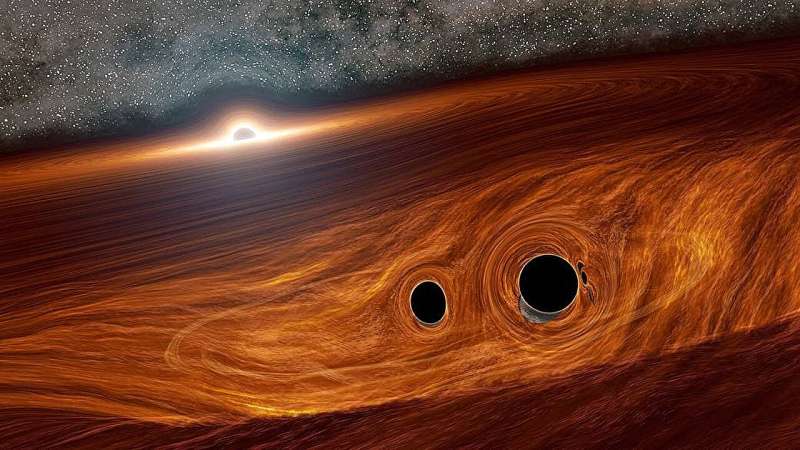This article has been reviewed according to Science X's editorial process and policies. Editors have highlighted the following attributes while ensuring the content's credibility:
fact-checked
preprint
trusted source
proofread
Some clever ways to search for primordial black holes

Primordial black holes (PBHs) have recently received much attention in the physics community. One of the primary reasons is the potential link to dark matter. In effect, if PBHs can be proven to exist, there's a very good chance that they are what dark matter, the invisible thing that makes up 85% of the universe's mass, is made of. If proven, that would surely be a Nobel-level discovery in astrophysics.
But to prove it, someone has to find them first. So far, PBHs exist only in theory. But we're getting closer to proving they do exist, and a new paper posted to the arXiv preprint server by Marcos Flores of the Sorbonne and Alexander Kusenko of UCLA traces some ideas on how we might be able to finally find PBHs and thereby prove or disprove their connection to dark matter.
Drs. Flores and Kusenko focus on understanding PBH formation theories and then extrapolate how those formations might be detectable, even with modern equipment. A typical black hole, which we know exists, forms when supermassive stars collapse under their own weight.
PBHs were formed before any stars of such size were available to collapse, so they must be formed using a different mechanism. The paper details a theorized PBH formation process that involves a detailed mathematical look at particle asymmetry and how that fits in with other models of particle physics. But how can astronomers see those formations?
One way is by watching a loss of angular momentum. Astronomers can observe "halos" of particles early on in the universe. In many cases, they are spinning rapidly. However, if their spin slows dramatically, it may indicate that a PBH was forming in the vicinity, sapping some of the energy from that angular momentum by pulling the particles towards themselves.
Another way is by watching a new favorite mechanism of astronomers everywhere—gravitational waves. It's not completely clear whether the formation of PBHs can cause gravitational waves. Still, the paper discusses some frameworks that can potentially lead to a theory of whether they do.
Supersymmetry provides one of those frameworks. In some cases, the early universe operating under the principles of supersymmetry could form a PBH that would form a gravitational wave that the next generation of gravitational wave detectors could potentially detect. In particular, it would involve what the paper calls a "poltergeist mechanism" resulting from space-time perturbations in certain theories.
A final way to detect these PBHs is to watch for gravitational lenses. Some experiments like the Optical Gravitational Lensing Experiment (OGLE) and the Hyper Suprime-Cam (HSC) of the Subaru telescope have noticed gravitational microlensing where there is no known massive object to cause such lensing. PBHs, which would be effectively invisible to those telescopes, could offer one explanation, though other explanations must be ruled out first.
Other theories offer other opportunities for PBH detection, including watching the interaction of "Q-balls" or theoretical large "blobs" of matter. If enough of these are collected together, they could potentially form a PBH.
Ultimately, there are more questions than answers surrounding these mysterious objects. If they do exist, they could answer plenty of them. However, more data is needed to prove that beyond any reasonable doubt. Experimentalists are already pushing forward as quickly as they can to develop new and better detectors that can help in the hunt for PBHs. If they do exist, it's only a matter of time before we find them.
More information: Marcos M. Flores et al, New ideas on the formation and astrophysical detection of primordial black holes, arXiv (2024). DOI: 10.48550/arxiv.2404.05430
Journal information: arXiv
Provided by Universe Today



















